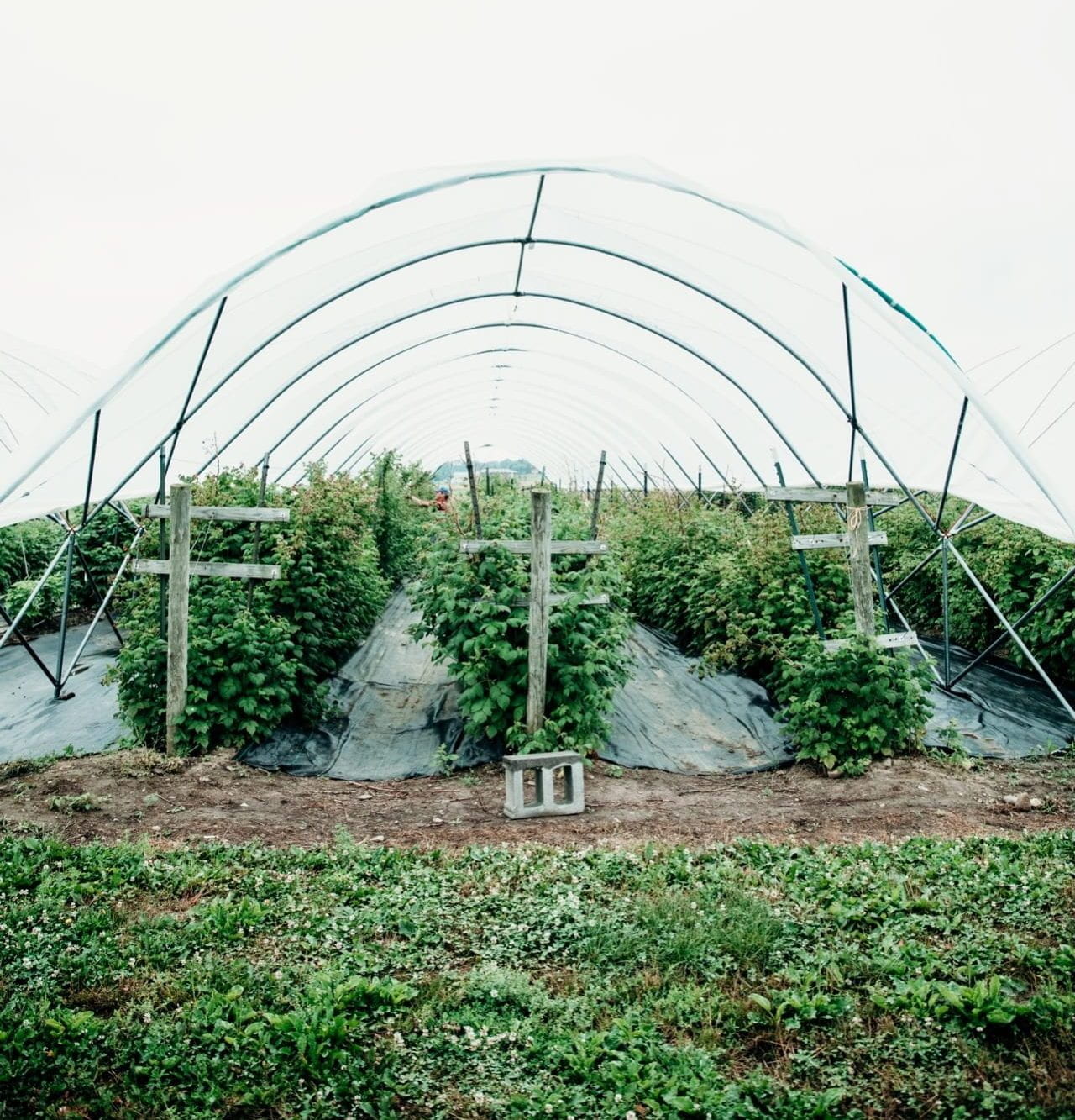High Tunnel Research to Support Winter Production
Season extension infrastructure is needed for farmers to maintain year-round supply of local produce.
The rise in demand for year-round supply of local produce has led many vegetable growers in Eastern New York to invest in season extension infrastructure. While Amy Ivy and Teresa Rusinek have collaborated with Jud Reid from the Cornell Vegetable Program to research high tunnel fertility demands and best practices for summer tomato production, little work has been done to better understand nutrient demands and cycling in tunnels for winter grown greens. With financial support from Northeast Sustainable Agriculture Research and Education (NE SARE) Partnership Grant, Ethan Grundberg collaborated with the Poughkeepsie Farm Project to study nitrogen availability and uptake in winter grown spinach, kale, and salad mix. Specifically, Grundberg was interested in the role that temperature plays in nutrient cycling in winter production and the economics of minimal supplemental heating in high tunnels.

Raspberries growing in high tunnels at Robbins Farm. Courtesy of Justin James Muir / Cornell University.
The Poughkeepsie Farm Project has identical side-by-side high tunnels with propane heaters, so the thermostat of onetunnel was set to 33 degrees and the other to 40 from November through March. Grundberg took soil nitrate samples from each tunnel weekly and submitted tissue samples from the crops every other week to assess nutrient uptake. Grundberg also tracked propane use in each tunnel while the farm crew tracked yield from research plots in the tunnels. While the data analysis is not yet complete, it does appear as if the added cost (2.14 times more propane was used to heat to 40 degrees than to heat to 33) of higher heating could be economically beneficial to winter lettuce growers. However, the additional yield measured in spinach and kale was not enough to offset the additional heating expense.
Amy Ivy investigated the question of nitrogen uptake and yield impacts from using different fertilizers for winter grown spinach at the Willsboro Research Farm. With funding from the Northern New York Agricultural Development Program, Ivy tracked the yield and nutrient content of plant foliage in plots fertilized with urea, bloodmeal, and alfalfa meal over the winter in an unheated high tunnel. Again, the data analysis is not yet complete, but the initial findings show almost no measurable difference in nitrogen uptake or yield across treatments, including the unfertilized control.
These two research projects highlight the need for further investigation of fertility needs and management in winter high tunnels; the data generated through this work will be used as the basis for a proposal for multi-year state-wide funding to continue developing best management practices for winter high tunnel producers.

